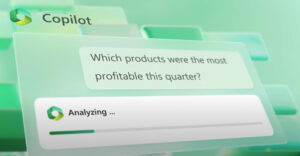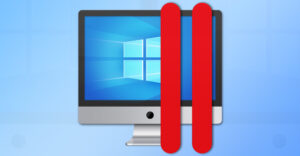Open-source innovations and the Linux operating system continue to set complacency aside.
The Linux Foundation is ever-expanding its influence as it brings more developer projects under its banner, leaving no room for proprietary software to rule the computing world.
LF is the world’s leading home for collaboration on open-source software, open standards, open data, and open hardware. Learn about the importance of NextArch and OpenBytes, two of LF’s newest creations.
Red Hat Linux pushed forward in recent weeks with two updates to further innovate enterprise computing. What difference can numbers make? Check out the significance of Red Hat’s recent release of RHEL version 8.5 versus the also just-released RHEL 9 Beta.
Also check out in this column why new fuzzing developments are good for your cybersecurity. Tired of going online to access the Microsoft Office suite on your Linux computer? Learn about two new alternative office suites you can run with full compatibility from your Linux hard drive.
LibreOffice Update Closes Out the Series
The Document Foundation on Nov. 4 announced the release and general availability of LibreOffice 7.1.7 as the last point release in the LibreOffice 7.1 office suite series.
The LibreOffice 7.1 office suite was released in February. It is supported until the end of November, after which the LibreOffice 7.1 series reaches the end of life. No new maintenance updates will be published.
LibreOffice 7.1.7 is a minor update to address 27 bugs across the office suite’s various core components. You can see details about them in the RC1 and RC2 changelogs.
This renders your installation vulnerable and outdated. No new maintenance releases for the 7.1 series will be issued. It is being replaced with LibreOffice 7.2, which is supported until June 12th, 2022. You can download it here. Or you can wait for it to be available in the various Linux distribution repositories.
LibreOffice 7.2 brings many new features and improvements, as well as better support for proprietary formats created with the MS Office suite. The latest point release is LibreOffice 7.2.2, but version 7.2.3 is expected to arrive by the end of the month.
New SoftMaker FreeOffice 2021 Now Available
If you are not a fan of the LibreOffice suite for Linux, SoftMaker’s FreeOffice suite for Linux may be more to your liking. FreeOffice is a free full-fledged alternative to Microsoft Office. Its latest completely revised version became available last month.
FreeOffice is seamlessly compatible with Microsoft Office with support for modern and classic Microsoft formats. It comes with support for the SVG graphic format, new functions, and improved import and export functions. An added benefit for Linux users who also run Windows or macOS computers, FreeOffice 2021 now also offers the option to use a license simultaneously with Windows and macOS.
The suite includes the word processing software TextMaker, the spreadsheet software PlanMaker, and the presentation software called Presentations. All three programs contain numerous innovations and improvements that make work even more efficient than previous releases. FreeOffice 2021 can be used with either modern ribbons or classic menus and toolbars.
The FreeOffice suite is the free offshoot of the commercial package SoftMaker Office. FreeOffice 2021 can be downloaded free of charge at freeoffice.com.
Linux Foundation Tackles Diverse Computing Environments
The Linux Foundation announced earlier this month at its Membership Summit the creation of the NextArch Foundation. The new Foundation is a neutral home for open-source developers and contributors to build a next-generation architecture that can support compatibility between an increasing array of microservices.
Cloud-native computing, artificial intelligence (AI), the internet of things (IoT), edge computing, and much more have led businesses down a path of massive opportunity and transformation. But a lack of intelligent, centralized architecture prevents enterprises and developers from fully realizing their promise.
The NextArch Foundation will address that glaring gap. Developers today face seemingly impossible decisions among different technical infrastructures and the proper tool for a variety of problems, said Jim Zemlin, executive director of the Linux Foundation.
“Every tool brings learning costs and complexities that developers do not have the time to navigate. Yet there is the expectation that they keep up with accelerated development and innovation,” he explained. “NextArch Foundation will improve ease of use and reduce the cost for developers to drive the evolution of next-generation technology architectures.
NextArch will leverage infrastructure through architecture and design to automate development, operations, and project processes to increase the autonomy of development teams. Enterprises will gain easy-to-use and cost-effective tools to solve the problems of productization and commercialization in their digital transformation journey.
“This is an important effort with a big mission, and it can only be done in the open-source community. We are happy to support this community and help build open governance practices that benefit developers throughout its ecosystem,” said Mike Dolan, senior vice president and general manager of projects at Linux Foundation.
Project OpenBytes Makes Open Data More Accessible
The Linux Foundation earlier this month announced the new OpenBytes project, spearheaded by Graviti, to make open data more available and accessible through the creation of data standards and formats.
Scores of AI projects have been held up for a long time by a general lack of high-quality data from real use cases, according to Edward Cui, Graviti’s founder. His company wants to change that situation.
“Acquiring higher quality data is paramount if AI development is to progress. To accomplish that, an open data community built on collaboration and innovation is urgently needed. Graviti believes it is our social responsibility to play our part,” he said.
A standard format of data published, shared, and exchanged on its open platform, will help data contributors and consumers easily find the relevant data they need and make collaboration easier, Cui explained.
Large tech companies already realize the potential of open data. But no well-established open data community with neutral and transparent governance across various organizations in a collaborative effort exists, according to LF.
“The future of software is being eaten by open source, as well as data-sharing. OpenByte’s announcement is a great signal for all developers on the accessibility of datasets. We are very excited to see standardized datasets available to a broader community, which will massively benefit AI engineers,” said Bing He, co-founder and COO at Jina AI.
Better Cyber Fuzzing for Software Devs
Continuous fuzzing over the years has become an essential part of the software development lifecycle. By feeding unexpected or random data into a program, fuzzing catches bugs that would otherwise slip through the most thorough manual checks and provides coverage that would take staggering human effort to replicate.
The U.S. Department of Commerce’s National Institute of Standards and Technology (NIST) recently issued new guidelines for software verification in response to the White House Executive Order on Improving the Nation’s Cybersecurity. That action specifies fuzzing among the minimum standard requirements for code verification.
Google on Nov. 11 announced the release of ClusterFuzzLite, an open-source continuous fuzzing solution that runs as part of continuous integration (CI)/continuous deployment (CD) workflows to find vulnerabilities faster than ever before.
With just a few lines of code, GitHub users can integrate ClusterFuzzLite into their workflow and fuzz pull requests to catch bugs before they are committed, enhancing the overall security of the software supply chain.
Since its release in 2016, over 500 critical open-source projects have been integrated into Google’s OSS-Fuzz program, resulting in over 6,500 vulnerabilities and 21,000 functional bugs being fixed. ClusterFuzzLite goes hand-in-hand with OSS-Fuzz, by catching regression bugs much earlier in the development process, according to Google.
Fuzzing is an extremely effective way to catch bugs that would otherwise be overlooked. The slow process is not always integrated into development processes, according to Jonathan Metzman, software engineer on the Google Open Source Security Team. ClusterFuzzLite offers a continuous solution that is an integrated part of the CI/CD workflows, making finding bugs much easier and faster.
“ClusterFuzzLite complements ClusterFuzz by being easy to set up and work with both open source and closed source projects. For example, a GitHub user can use ClusterFuzzLite on GitHub actions with just one simple configuration file,” he told LinuxInsider.
“It also fuzzes pull requests and commits, allowing it to catch bugs before they land. ClusterFuzz does not offer this feature, and therefore ClusterFuzzLite is complementary for users who are already using ClusterFuzz,” he said.
RHEL 8.5 Releases Addresses Deployment Complexity
Red Hat on Nov. 10 announced the general availability of Red Hat Enterprise Linux 8.5. REHL is an enterprise Linux platform. It offers a common open operating system that extends across clouds, traditional data center operations, and out to the edge.
Version 8.5 provides new capabilities to meet evolving and complex IT needs, from enhanced cloud-native container innovations to extending Linux skills with system roles, on whatever footprint our customers require.
RHEL 8.5 is designed to offer a refined platform for the hybrid world. It addresses the needs of traditional data centers as well as complex multi-cloud and edge computing deployments to enhance digital transformation.
Red Hat Enterprise Linux 8.5 is now generally available via the Red Hat Customer Portal.
RHEL 8.5 is designed to offer solutions as a backbone to public cloud providers, multiple hardware architectures, virtualized environments, and edge computing models, according to Red Hat. This can be a solution to organizations that find using public cloud exclusively may not be economically feasible for long-term scale.
Wait, REHL Has a New Beta
If you do not have mission-critical work and want more cutting edge, you can skip the latest stable release of RHEL 8.5 in favor of the REHL 9 Beta released on Nov. 3 instead.
Red Hat Enterprise Linux (RHEL) 9 Beta is now available with new features and many more improvements. The newest beta release is based on upstream kernel version 5.14 and provides a preview of the next major update of RHEL. Like version 8.5, this release is designed for demanding hybrid multi-cloud deployments that range from physical, on-premises, public cloud to edge.
Unlike previous major releases of RHEL, the version 9 Beta release has fewer changes that require admins and IT Ops to figure out. Go here for the full picture.

























































